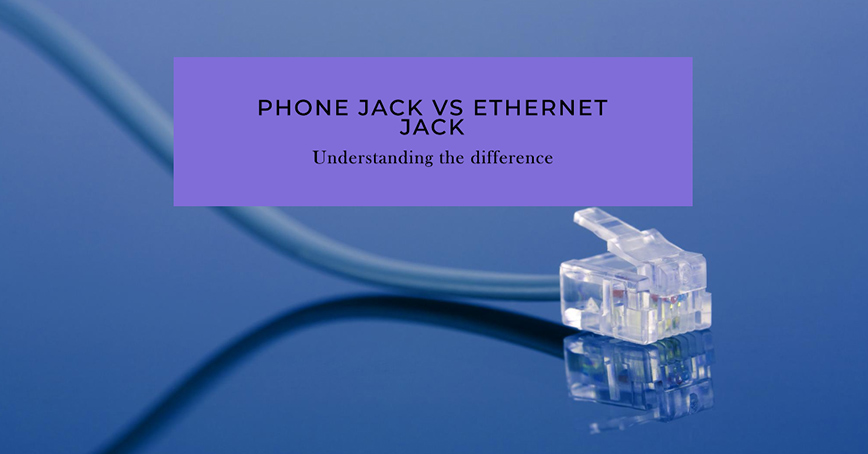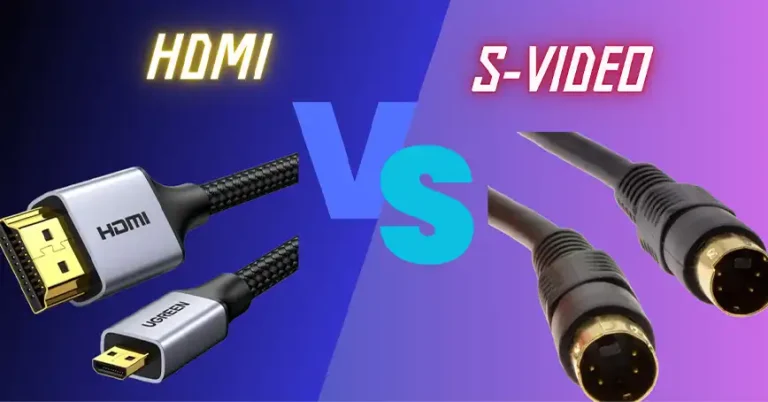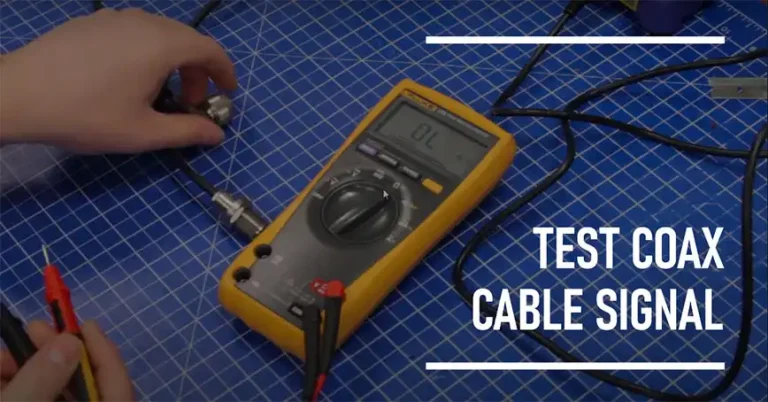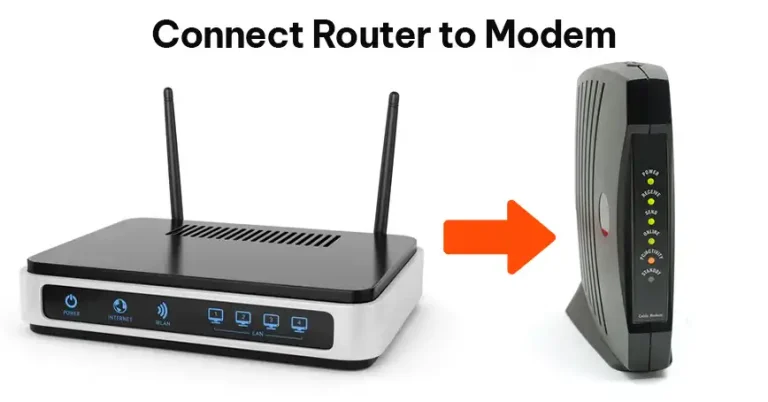Phone Jack vs Ethernet Jack | Explained
Have you ever wondered about the difference between a phone jack and an ethernet jack? They might look similar, but trust me, they’re not the same thing at all. As someone who’s been working in the tech industry for years, I’ve seen countless people get confused about these two connectors. If you are one of them then there is nothing to worry about.
In this article, I’ll break it down for you in simple terms. We’ll explore their purposes, designs, and how they enable different types of connectivity. So, stick with me, and by the end, you’ll never mix up a phone jack and an ethernet jack again!

Aren’t a Phone Jack and an Ethernet Jack the Same Thing?
While phone jacks and ethernet jacks may seem similar at first glance, they are actually quite different and serve distinct purposes in terms of connectivity and data transmission. Let me clear up the confusion once and for all.
No, a phone jack and an ethernet jack are not the same thing. Although they share some superficial similarities in their physical appearance, they are designed for entirely different applications and have unique specifications.
- Phone jacks: These guys are the voice of the past (and sometimes the present). They’re designed to connect telephones and some DSL modems for voice communication. Think chatting with your grandma or that satisfying “you’ve reached our automated system” recording.
- Ethernet jacks: These are the workhorses of the modern wired network. They connect devices like computers, game consoles, and even some smart TVs directly to your router or modem, providing a reliable and high-speed path for data transfer. Think of streaming movies, downloading games, or having a lag-free video call.
So, next time you see those jacks, remember: phone jacks for talking, ethernet jacks for all the other digital fun stuff.
Side-by-Side Differences Between Phone Jack and Ethernet Jack
To truly understand the differences between these two types of jacks, let’s find out into their respective characteristics and functionalities.
Purpose of the Cables
Phone Jack: A phone jack, also known as an RJ-11 jack, is specifically designed to facilitate voice communication over traditional analog telephone lines. Its primary purpose is to connect landline telephones to the telephone network, allowing users to make and receive calls. Additionally, phone jacks are also used for Digital Subscriber Line (DSL) services, which enable internet access by transmitting data over existing telephone wiring.
Ethernet Jack: On the other hand, an ethernet jack, commonly referred to as an RJ-45 jack, serves an entirely different purpose. It is the standard connector used to establish wired connections between devices and local area networks (LANs) or the Internet. Ethernet jacks are essential for enabling high-speed data transfer between computers, routers, modems, and other networked devices for seamless internet access and data sharing.
Connector Size and Pins
Phone Jack: Phone jacks typically adhere to the RJ-11 connector standard, which features 6 pins or conductors. There is also a variation called the RJ-12 connector, which has a similar design but utilizes all 6 pins, often used in situations where two separate phone lines need to be accommodated in a single jack.
Ethernet Jack: In contrast, ethernet jacks employ the RJ-45 connector standard, which has a larger size and consists of 8 pins or conductors. It is an 8-position, 8-contact (8P8C) modular plug and jack the most common twisted-pair connector, and the de facto standard for twisted-pair Ethernet cabling. This increased number of pins is necessary to support the higher data transmission requirements of Ethernet networks.
Wires and Pairs
Both phone jacks and ethernet jacks use twisted-pair cables. These cables aren’t just a jumble of wires thrown together. Each cable contains several insulated wires twisted in pairs. This twisting helps to reduce electrical interference, which can scramble the signal traveling through the cable.
Phone Jacks: The RJ11 is a 6-position, 2-contact (6P2C) interface that is commonly used for one-line telephone services. Phone jacks typically use cables with just one twisted pair. These two wires are enough to carry the analog voice signals needed for phone calls.
Ethernet Jacks: Ethernet jacks, on the other hand, are built for more complex data transmission. They leverage cables with four twisted pairs (eight individual wires). This additional wiring allows for faster data transfer speeds and supports the intricate digital signals used in ethernet communication.
Data Transmission
Phone Jack: While phone jacks are capable of transmitting analog voice signals, they are not designed for high-speed data transmission. The bandwidth and data rates supported by traditional telephone lines are relatively low compared to modern networking standards, making them unsuitable for demanding data-intensive applications.
Ethernet Jack: Ethernet jacks, on the other hand, are specifically engineered to support high-speed data transmission. The maximum data rate and throughput achievable through an ethernet connection depend on the category (Cat) of the ethernet cable used. Higher categories, such as Cat6 and Cat7, offer faster speeds and improved performance, enabling seamless transfer of large files, streaming of high-definition video, and other data-intensive tasks.
Cable Thickness
Phone Cable: Phone cables, which connect to phone jacks, are typically thinner and more flexible compared to ethernet cables. This is because they are designed to carry lower-bandwidth signals and require fewer internal conductors.
Ethernet Cable: In contrast, ethernet cables, designed for use with ethernet jacks, are generally thicker and have a rounder shape. This is due to the higher number of twisted pairs of wires inside the cable, which helps reduce crosstalk and electromagnetic interference, ensuring reliable and high-quality data transmission over longer distances.
Summary
| Feature | Phone Jack (RJ-11) | Ethernet Jack (RJ-45) |
| Purpose | Designed for analog voice communication and basic internet (DSL) | Designed for high-speed data networking and internet connectivity |
| Connector Type | RJ-11 connector with 6 pins | RJ-45 connector with 8 pins |
| Cable Thickness | Thinner and more flexible | Thicker and rounder |
| Data Transmission | Supports lower bandwidth for voice signals | Supports high bandwidth for data transmission |
| Common Uses | Connecting landline phones, fax machines, DSL modems | Connecting computers, routers, modems, networked devices |
| Cable Color | Typically gray or silver | Various colors (blue, yellow, green) based on category |
| Maximum Data Rate | Limited bandwidth, not designed for high-speed data | High data rates, varies based on cable category (Cat5e, Cat6, etc.) |
| Compatibility | Phone cables cannot be plugged into ethernet jacks | Ethernet cables may fit into phone jacks but won’t work properly |
Did You Know?
As we explore the differences between phone jacks and ethernet jacks, let me share a few interesting facts that you might find intriguing.
Compatibility
One of the most crucial distinctions between phone jacks and ethernet jacks is their lack of compatibility. Phone cables cannot be plugged into ethernet jacks, and vice versa. The connectors are simply not designed to mate with each other’s ports due to their different pin configurations and purposes. Attempting to forcefully connect them could potentially damage the jacks or the cables themselves, leading to costly repairs or replacements.
Origins
The RJ-11 phone jack has a rich history, tracing its origins back to the 1970s when it was developed by the Bell System as a standardized connector for analog telephone lines. On the other hand, the RJ-45 ethernet jack came into existence a bit later, in 1973, as a standardized connector for local area networks (LANs) and the burgeoning Ethernet technology.
Colors
While phone cables are typically gray or silver in color, ethernet cables can come in a wide variety of hues, such as blue, yellow, green, or red. These colors are often used to differentiate between cable categories (e.g., Cat5e, Cat6, etc.) and performance levels, making it easier to identify and organize cables in a network setup. Some manufacturers even use specific color codes to indicate shielded or unshielded cable types, further aiding in cable management and troubleshooting.
Bottom Line
Well, these two connectors might appear alike, but they serve unique purposes in connectivity and data transmission. Remember, phone jacks are for voice communication and basic internet access, while ethernet jacks are essential for high-speed data networking. If you still have any questions, feel free to ask in the comments below. I hope this article has provided you with a clear understanding of when to use each type of jack.





